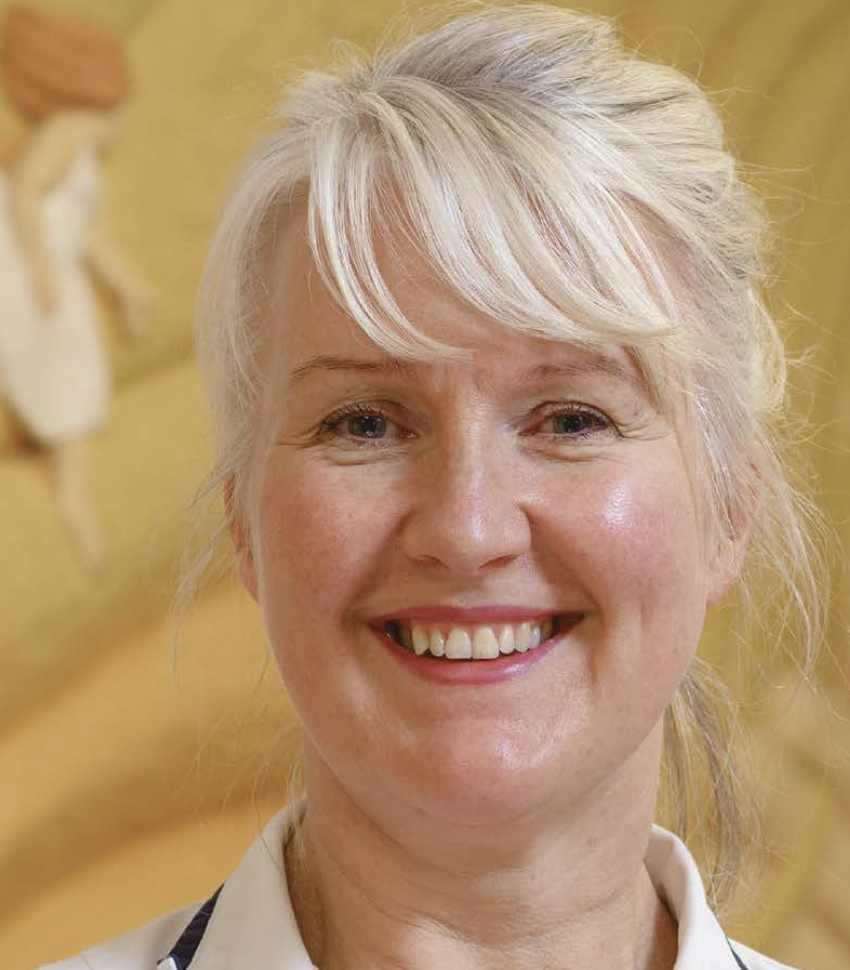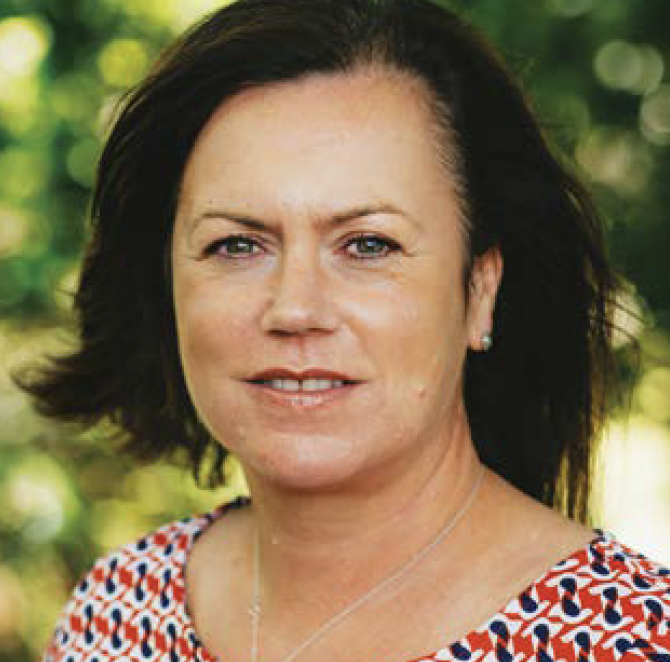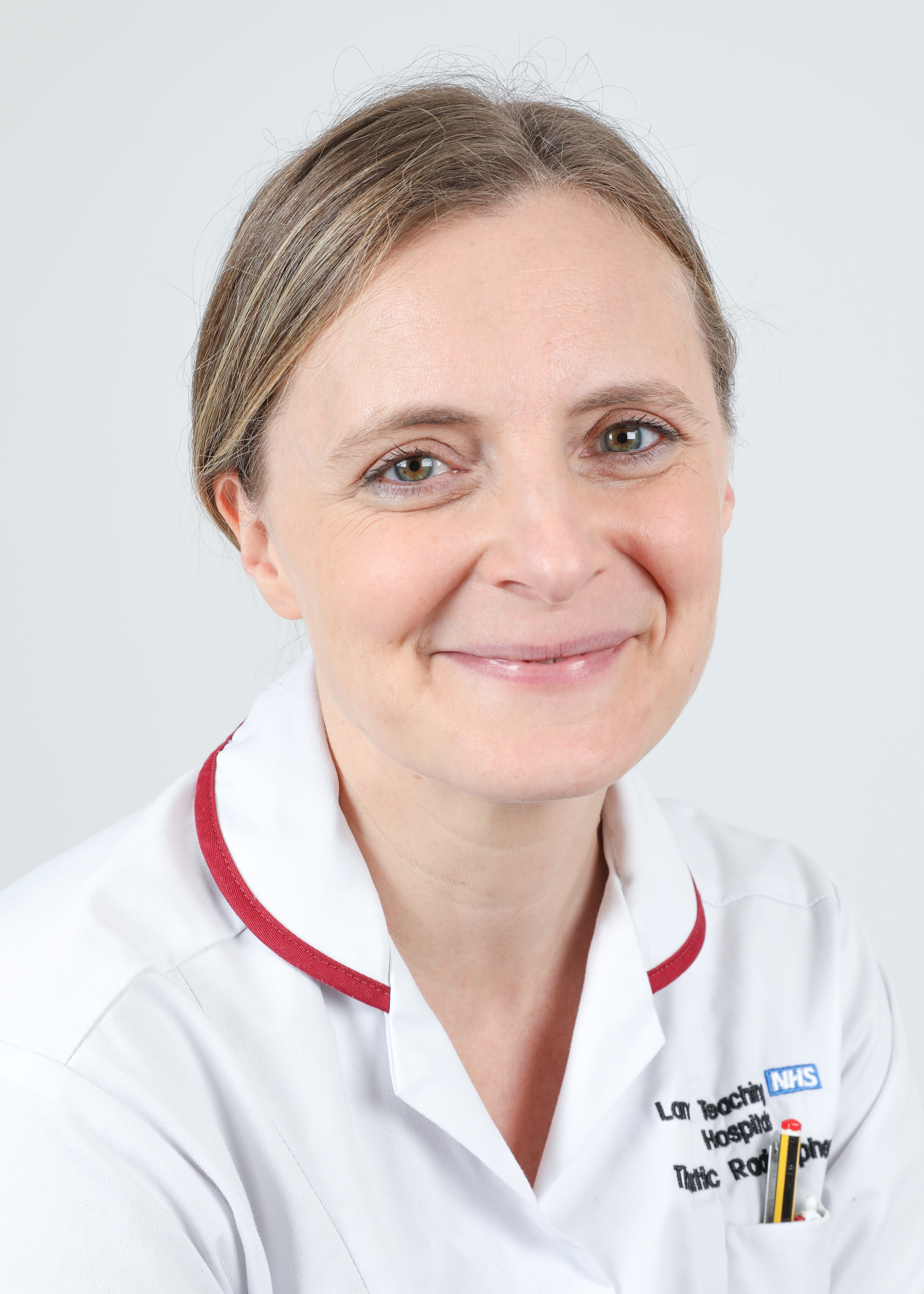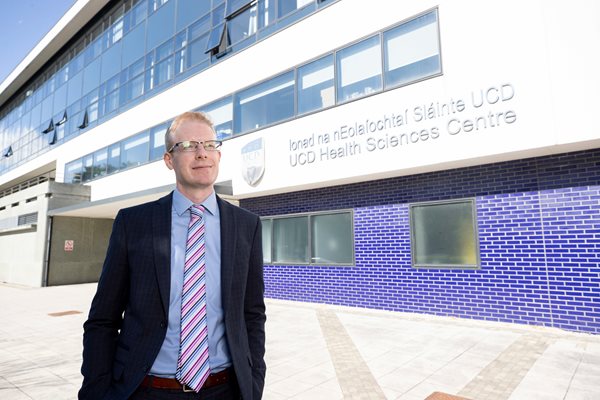"I'm passionate about the service. Anyone who knows me knows I'm 100 miles an hour. I sometimes have to say ‘do one thing and try to do it well because you can't do 18 things at once' otherwise I can be easily overwhelmed."
Leah Cox is certainly not one to hang around. The first non-medical health professional to be appointed a cancer site Clinical Advisory Group (CAG) lead at the huge Betsi Cadwaladr University Health Board (BCUHB) in North Wales, she exudes energy, enthusiasm and dedication to her work.
"I keep flying our flag. We're in a fantastic part of the world, we're a great multidisciplinary team (MDT) and a fab radiotherapy department,” she says, with refreshing positivity. “I have wonderful colleagues I count as friends and a really supportive radiotherapy manager.”
Leah trained at the West Midlands School of Therapeutic Radiography, qualifying in 1991 before heading off to Canada to fulfil a childhood ambition. "It was always a dream to go there. I love snow, skiing and the mountains," she says.
"I keep flying our flag. We're in a fantastic part of the world, we're a great multidisciplinary team (MDT) and a fab radiotherapy department,” she says, with refreshing positivity. “I have wonderful colleagues I count as friends and a really supportive radiotherapy manager.”
After stints working as a radiation therapist in Toronto and Calgary, she returned to the UK and subsequently worked in Charing Cross, Royal Marsden and Guy’s and St Thomas’ Hospitals.

Photo: Stephen Williams
A desire to start a family prompted Leah and her husband to return to her native North Wales in 2001 to work at the BCUHB, the largest health board in Wales, which provides services for around 694,000 people.
Her clinical post is now as a lead review radiographer, working with colorectal and head and neck cancer patients.
"I review the patients and manage their side effects. I'm a non-medical prescriber and a non-medical referrer for imaging. It's taken a lot of work and commitment to get there but it helps the patients and it helps the service. When the colorectal patients are on their short courses [of radiotherapy], they see me and I can refer them for timely pre-op imaging, eliminating the need for an oncologist referral and review.”
Guideline development
From 2013 to 2016, Leah worked with the National Institute for Health and Care Excellence (NICE), representing radiotherapy as a development group member for head and neck cancer guidelines. She is still a NICE expert advisor for this disease site.
"I just learnt so much and became so passionate about this particular disease and cohort of patients. I recognised that there was an evidence base out there advocating how we should be working and treating this aggressive disease."
Her growing interest in head and neck cancer inspired Leah to study for a master’s degree in advanced clinical practice.
"That changed the direction of my career into head and neck review. I felt so enthusiastic about contributing to a bigger and more influential organisation beyond radiotherapy. I looked at what I could do in Wales and I applied to become joint deputy lead for the Welsh Cancer Network for head and neck cancer for a couple of years. We worked hard to be the first disease site to co-write and launch the optimal pathways for head and neck cancer.”
Clinical lead
When the opportunity arose to apply for the head and neck cancer MDT lead at BCUHB, which rotates every three years, Leah went for it. Her success is a testament to her clinical skills and leadership abilities, considering the post had always been filled by a medical colleague.
"Traditionally, it's a role held by a surgeon or an oncologist but I had the support from the MDT over the years and they encouraged me to believe in my abilities. I had learnt so much from working with NICE and the Welsh Cancer Network that I understood the pathway from a lump through to diagnosis."
She was appointed MDT lead in the autumn of 2021, making her the only non-medical cancer lead across the health board in such a role.
Leah says she would like to reach out to any other non-medical leads around the country to compare notes. "It's a great role. It's challenging and traditionally maybe radiographers have felt it's not something they can do or they’ve not had the support to look into."
Team working always involves personalities and, at times, she has to deploy some tactical leadership skills and stick to clear pathways to ensure clarity of plan and documentation.
“Head and neck cancer is one of the most complex pathways, navigating the ‘best’ pathway involves many health professionals, and we all should be in agreement and aware of the plan. Ultimately, the patient is at the centre of this and makes the decision based on the expert opinions proffered after a lengthy MDT discussion.
"I have felt supported but there are always challenges. I wouldn't say that the beginning was very easy but I'm learning now how and when to step in as MDT chair when things get a bit too ranty or contentious and move it forward in the patient's best interests. I also have to remain ‘neutral’ with oncology being my background.
“I try very much to bring things back to optimal pathways. We have two in Wales, the neck lump pathway and the mucosal pathway. If we try to model our discussions and investigations along these pathways, we can use them as framework. It doesn't replace clinical decision-making and that's why I need diplomacy/professionalism to allow clinicians the time to contextualise a disease or clinical decision they’ve made. However, you do reach a point where we all have busy clinics to rush to, and you can't always indulge one person's frustrations."
"MDT colleagues have kindly given me feedback regarding my organisational skills and know that I understand head and neck disease, the challenges and the NICE guidelines that underpin what treatment should be offered or considered for what type of disease.”
Service improvements
Since becoming MDT lead, Leah has been behind a number of service improvements and innovations. One was the submission of a positron emission tomography (PET) proposal, which will hopefully see the inclusion of a new type of referral criterion.
As Clinical Advisory Group lead for head and neck cancer, she was responsible for all aspects of the proposal, collating and submitting the relevant data and evidence.
The team also just had its first North Wales Education Day. "I remember saying to my colleagues that if I ever got this post, my priority would be to get us all together at an education event. North Wales is often underrepresented at education events, which further perpetuates health inequalities if the professionals in the north cannot access what as their colleagues can in the south. Unless we can fly our flag, we struggle with being visible across the UK and it can affect recruitment and retention.
"We have some great colleagues doing amazing work and we should be showcasing this, so we had our first education day on 8 November and the feedback was really great. Hopefully it will be the first of many."
Leah has also worked on the TORS (trans-oral robotic surgery) pathway. The TORS technique involves the removal or diagnosis of cancer inside the throat, enabling surgeons to histopathologically identify the precise location of tumours, potentially reducing the area treated with radiotherapy and, in some cases, removing the need for chemo/radiotherapy altogether.
"Its remit and scope is growing for head and neck cancer. I've worked on a referral pathway to Cardiff for some of our North Wales patients with a really helpful surgeon from the south. Post TORS patients then have their adjuvant treatment back here. It allows us to get a true primary diagnosis. The treatment can be more targeted, which reduces morbidity.
“There is what we as a team are calling a ‘hybrid referral pathway’, where we refer some of our east patients to an oncologist in Liverpool because there is a shortage of clinical oncologists in North Wales.
"She's an amazing oncologist who has been so supportive at a time when we were clinically very vulnerable. Working collaboratively has been such a positive experience despite all the hurdles.”
Another priority has been to engage with the IT department at the health board so clinical images can be stored online and easily accessed by clinicians.
Challenges
Of course, it's not all plain sailing and Leah is aware of the obstacles facing all clinical teams in these troubled times.
"We have a national shortage of clinical oncologists and our department is very vulnerable. Work can be done remotely but that doesn't replace clinical assessment. The oncologist needs to see the patient to make the decision about whether they're well enough for radiotherapy, with or without chemotherapy. On paper they may be ‘well’ but when they have a thorough consultation, the oncologist gets a different picture and changes the MDT planned treatment.”
Leah feels inclusivity in the MDT is one way to overcome such challenges and build safer services. “My master’s dissertation was about comorbidity scoring at head and neck MDTs and, not surprisingly, results demonstrated poor concordance with a treatment plan and increased risk if the comorbidities were poorly known.
"With the inclusion of AHPs and nurses in the MDT, they should feel more comfortable to speak out about the patient's medical history and the treatment becomes safer.
"I have worked with our cancer health board lead AHP to help capture data about our AHP workforce in head and neck cancer to try to improve attendance at MDTs to ultimately help our patients. When we are making a really complex decision regarding a patient’s advocated pathway, we need input from dietitians, speech and language therapists and they must feel comfortable as professional peers to share their expertise. I believe it is helpful for them that I am a non-medic.
Aspirations
“I would love one day to become a consultant head and neck radiographer, which means embarking on my consenting module. To do that I need the health board’s support and a clinical oncologist to train me so I'm in a bit of a catch 22…but I won’t stop trying,” Leah says.
“I'd also like to support follow-up clinics and run late-effects clinics with my colleagues, and to offer patients peer support from those who previously have had treatment.
“And I’d like more therapeutic radiographers, who are specialising in disease sites, to attend MDTs because I think they are needed. They have unique skills and are best placed to discuss radiotherapy options, side effects, techniques available and treatment limitations.”
Anyone considering their professional role can, with Leah Cox as an example, feel encouraged to believe in their skills and see how their therapeutic radiography expertise is needed in the wider world of oncology.
Related News
 Advanced practitioners
Advanced practitionersThe Synergy profile - Lisa Bisset
The clinical director of the Dorset Breast Screening Unit talks about training, advanced p...
 People
PeopleDr Lisa Ashmore appointed to clinical academic role
Dr Ashmore will take on the new post at Rosemere Cancer Centre, Preston
 People
PeopleJonathan McNulty wins Most Influential Radiographer award
The editor-in-chief of Radiography journal has won a prestigious award for his work at the...
